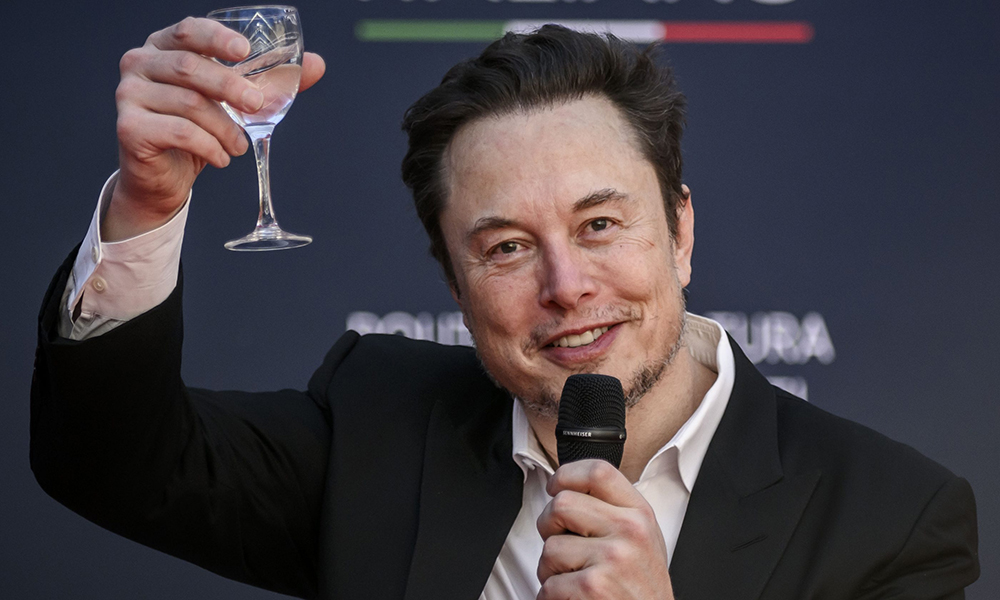
23年来,美国的四大汽车制造商首次没有一家在超级碗(Super Bowl,美国国家橄榄球联盟的年度冠军赛)上播放全国性广告,但起亚(Kia)和大众(Volkswagen)等外资公司正在弥补这一空缺。“美国汽车市场形势严峻”是造成这一现象的一大主要原因。
消费者需求放缓和利率高企正在迫使福特(Ford)、丰田(Toyota)、通用汽车(GM)和克莱斯勒(Chrysler)的母公司Stellantis削减广告支出。汽车广告是超级碗的重要资金来源——在过去的15年里,Stellantis只错过了两次——但根据AdAge的档案,自2001年以来,今年的比赛将是首次没有四大巨头为30秒的广告投入约700万美元的费用。
Stellantis的一位发言人在给《财富》杂志的一份声明中写道:“我们将继续专注于维护业务基本面,以减轻美国汽车市场严峻形势带来的影响……今年我们将不会参加超级碗。”丰田告诉《财富》杂志,作为广告的替代,丰田将在比赛前和比赛期间通过“激动人心的、多方位的活动体验”来“点燃现场氛围”,并指出丰田目前是美国国家橄榄球联盟(NFL)的官方汽车赞助商。通用汽车方面则证实,旗下所有品牌都不会在超级碗期间做广告,并表示将不断更新其媒体战略,“以确保与我们的业务重点保持一致”。无法立即联系到福特公司进行置评。
电动汽车寒冬?
在经历了残酷的2023年之后,汽车行业可能会面临由此带来的长期影响。据彭博社(Bloomberg)报道,为了追赶行业领头羊特斯拉(Tesla),截至2023年11月,传统制造商共投入了大约1,000亿美元用于大众市场的电动汽车生产,但销量仍然落后于预期,客户也在抱怨可靠性问题,而且即使有税收抵免政策优惠,大多数车型对普通消费者来说依旧过于昂贵。在最近1月的严冬暴风雪和“炸弹气旋”里,在温度降至零下的情况下,遗憾的是,芝加哥消费者的特斯拉汽车无法充电,很可能是因为他们没有阅读有关如何“预调”电池的细则。
《财富》杂志联系到的公司中,没有一家明确表示2023年电动汽车市场的严峻形势是它们放弃超级碗广告投放的原因,但查看一下它们的收益就知道了——在过去的一年里,电动汽车的争夺赛对它们的资产负债表造成了沉重的负担。2023年6月,仅福特一家公司就估计,其电动汽车部门在2023年的成本将达到45亿美元。通用汽车以市场放缓为由,在2023年10月下调了电动汽车生产目标。
即便是遥遥领先的行业领导者特斯拉,也受到了2023年电动汽车市场动荡的冲击。2023年秋天,首席执行官埃隆·马斯克领导的电动汽车巨头公布了自2020年以来的首次季度亏损。一位高管最近承认,在长达数年的牛市之后,该公司正处于“温和低增长期”。今年的情况也不容乐观:特斯拉在今年前两周的市值损失就超过940亿美元——这是该上市公司历史上最糟糕的开局——因为它要消化从赫兹(Hertz)退出供应协议、在中国再次降价到昂贵的劳动力成本等一系列坏消息。
整体行业前景不佳也对低迷的电动汽车行业毫无助益。尽管2023年美国汽车总销量增长了12%,但仍旧落后于新冠疫情前的水平。消费者需求降温,再加上罢工和供应链问题等导致的生产中断,使得2024年全美汽车业前景堪忧。
尽管如此,电动汽车依然将成为本届超级碗的焦点,起亚汽车将宣传其最新发布的EV9 SUV。大众在1月18日调侃到,这是其10年来首次投放广告。这家德国公司正在庆祝其在美国开展业务75周年。这两家公司都在积极推广其电动汽车产品,截至2023年10月,二者的年销量增长均超过60%,各自约占全美电动汽车销量的3%。但这两家公司仍然远远落后于特斯拉,后者在新电动汽车市场上的份额高达56.5%。
除了经济形势之外,四大巨头都放弃广告投放的部分原因可能关乎时机。丰田在2023年秋天签约成为美国国家橄榄球联盟的独家汽车合作伙伴,据说每年的费用高达5,000万美元,但丰田不会在2月11日超级碗比赛期间发布任何重要的新产品。
晨星公司(Morningstar)的分析师大卫·惠斯顿说:“我想不出[丰田]有哪款车型需要如此高的广告曝光率。这些广告价格不菲。”(财富中文网)
译者:中慧言-王芳
23年来,美国的四大汽车制造商首次没有一家在超级碗(Super Bowl,美国国家橄榄球联盟的年度冠军赛)上播放全国性广告,但起亚(Kia)和大众(Volkswagen)等外资公司正在弥补这一空缺。“美国汽车市场形势严峻”是造成这一现象的一大主要原因。
消费者需求放缓和利率高企正在迫使福特(Ford)、丰田(Toyota)、通用汽车(GM)和克莱斯勒(Chrysler)的母公司Stellantis削减广告支出。汽车广告是超级碗的重要资金来源——在过去的15年里,Stellantis只错过了两次——但根据AdAge的档案,自2001年以来,今年的比赛将是首次没有四大巨头为30秒的广告投入约700万美元的费用。
Stellantis的一位发言人在给《财富》杂志的一份声明中写道:“我们将继续专注于维护业务基本面,以减轻美国汽车市场严峻形势带来的影响……今年我们将不会参加超级碗。”丰田告诉《财富》杂志,作为广告的替代,丰田将在比赛前和比赛期间通过“激动人心的、多方位的活动体验”来“点燃现场氛围”,并指出丰田目前是美国国家橄榄球联盟(NFL)的官方汽车赞助商。通用汽车方面则证实,旗下所有品牌都不会在超级碗期间做广告,并表示将不断更新其媒体战略,“以确保与我们的业务重点保持一致”。无法立即联系到福特公司进行置评。
电动汽车寒冬?
在经历了残酷的2023年之后,汽车行业可能会面临由此带来的长期影响。据彭博社(Bloomberg)报道,为了追赶行业领头羊特斯拉(Tesla),截至2023年11月,传统制造商共投入了大约1,000亿美元用于大众市场的电动汽车生产,但销量仍然落后于预期,客户也在抱怨可靠性问题,而且即使有税收抵免政策优惠,大多数车型对普通消费者来说依旧过于昂贵。在最近1月的严冬暴风雪和“炸弹气旋”里,在温度降至零下的情况下,遗憾的是,芝加哥消费者的特斯拉汽车无法充电,很可能是因为他们没有阅读有关如何“预调”电池的细则。
《财富》杂志联系到的公司中,没有一家明确表示2023年电动汽车市场的严峻形势是它们放弃超级碗广告投放的原因,但查看一下它们的收益就知道了——在过去的一年里,电动汽车的争夺赛对它们的资产负债表造成了沉重的负担。2023年6月,仅福特一家公司就估计,其电动汽车部门在2023年的成本将达到45亿美元。通用汽车以市场放缓为由,在2023年10月下调了电动汽车生产目标。
即便是遥遥领先的行业领导者特斯拉,也受到了2023年电动汽车市场动荡的冲击。2023年秋天,首席执行官埃隆·马斯克领导的电动汽车巨头公布了自2020年以来的首次季度亏损。一位高管最近承认,在长达数年的牛市之后,该公司正处于“温和低增长期”。今年的情况也不容乐观:特斯拉在今年前两周的市值损失就超过940亿美元——这是该上市公司历史上最糟糕的开局——因为它要消化从赫兹(Hertz)退出供应协议、在中国再次降价到昂贵的劳动力成本等一系列坏消息。
整体行业前景不佳也对低迷的电动汽车行业毫无助益。尽管2023年美国汽车总销量增长了12%,但仍旧落后于新冠疫情前的水平。消费者需求降温,再加上罢工和供应链问题等导致的生产中断,使得2024年全美汽车业前景堪忧。
尽管如此,电动汽车依然将成为本届超级碗的焦点,起亚汽车将宣传其最新发布的EV9 SUV。大众在1月18日调侃到,这是其10年来首次投放广告。这家德国公司正在庆祝其在美国开展业务75周年。这两家公司都在积极推广其电动汽车产品,截至2023年10月,二者的年销量增长均超过60%,各自约占全美电动汽车销量的3%。但这两家公司仍然远远落后于特斯拉,后者在新电动汽车市场上的份额高达56.5%。
除了经济形势之外,四大巨头都放弃广告投放的部分原因可能关乎时机。丰田在2023年秋天签约成为美国国家橄榄球联盟的独家汽车合作伙伴,据说每年的费用高达5,000万美元,但丰田不会在2月11日超级碗比赛期间发布任何重要的新产品。
晨星公司(Morningstar)的分析师大卫·惠斯顿说:“我想不出[丰田]有哪款车型需要如此高的广告曝光率。这些广告价格不菲。”(财富中文网)
译者:中慧言-王芳
For the first time in 23 years, none of America’s four largest automakers will air national Super Bowl ads – but foreign-owned companies like Kia and Volkswagen are picking up their slack. The “challenging U.S. automotive market” is a leading reason why.
Slowing consumer demand and high interest rates are pressuring Ford, Toyota, GM and Chrysler parent company Stellantis into cutting back on their ad spend. Car commercials are a Super Bowl mainstay – Stellantis alone has only missed two in the past 15 years – but this year’s game will be the first since 2001 where none of the Big Four are coughing up the estimated $7 million fee for a 30-second spot, according to AdAge’s archive.
“With a continued focus on preserving business fundamentals to mitigate the impact of a challenging U.S. automotive market …we will not be participating in the Big Game this year,” wrote a Stellantis spokesperson in a statement to Fortune. Toyota told Fortune that in lieu of an ad, it will “activate on the ground” with an “exciting, multi-faceted activation experience” both leading up to and during the game, noting that it is currently the NFL’s official automotive sponsor. GM, for its part, confirmed that none of its brands would advertise during the Super Bowl and said it continually updates its media strategies “to make sure they align with our business priorities.” Ford could not be immediately reached for comment.
The EV winter?
The auto industry could be facing a long hangover after a brutal 2023. Racing to catch up to runaway industry leader Tesla, legacy manufacturers had collectively poured roughly $100 billion into mass-market EV production as of November, according to Bloomberg – but sales lagged behind projections, customers complained about reliability issues and most models are still too expensive for the average consumer, even with the help of tax credits. In the recent brutal January winter storm and “bomb cyclone,” Teslas failed to charge for unlucky Chicago consumers in subzero temperatures, likely because they didn’t read the fine print about how to “precondition” their batteries.
None of the companies Fortune reached out to explicitly cited the tough 2023 EV market as the reason for their Super Bowl advertising pullback, but just look at their earnings—the EV scramble has weighed heavily on their balance sheets in the past year. Ford alone estimated in June that its EV division would cost it $4.5 billion in 2023. GM walked back its EV production target in October, citing a slowing market.
Even Tesla, the far-and-away industry leader, was hit by 2023’s rough and tumble EV climate. CEO Elon Musk’s EV giant reported its first quarterly loss since 2020 last fall, and an executive recently admitted the company was in a “moderate low-growth period” after a yearslong bull run. This year hasn’t been any better: Tesla lost over $94 billion in market valuation in the first two weeks of 2024—its worst start to a year in its history as a public company—as it digests bad news ranging from Hertz backing out a supply deal to another price cut in China to expensive labor costs.
A poor broader industry outlook hasn’t helped the sagging EV sector, either. Although American total auto sales rose 12% last year, they’re still lagging behind pre-pandemic levels. And cooling consumer demand – along with manufacturing disruptions such as strikes and supply chain issues – paint a cloudy picture for the domestic automotive industry in 2024.
Nonetheless, EVs will take center stage this Super Bowl, as Kia promotes its newly released EV9 SUV. Volkswagen is running an ad for the first time in 10 years, which it teased on January 18. The German company is celebrating its 75th year of business in the US. Both companies have been aggressively pushing their EV offerings, with each reporting over 60 percent annual sales growth as of last October – they each sell about 3 percent of EVs nationwide. But both still lag well behind Tesla, which commands a whopping 56.5 percent of the new EV market.
Beyond economic conditions, part of the reason the Big Four have all passed on ads could be timing. Toyota, which last fall signed on as the NFL’s exclusive automotive partner at a reported cost of up to $50 million a year, isn’t releasing any major new products that coincide with the February 11 Super Bowl date.
“I can’t think of a vehicle that [Toyota] needs to advertise at that level of exposure. These ads are expensive,” said David Whiston, a Morningstar analyst.






